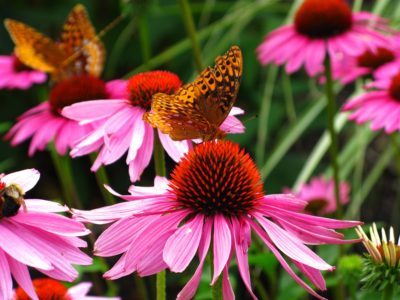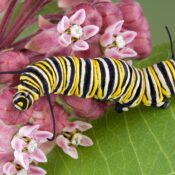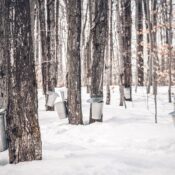Nature’s pollinators, particularly bees, are essential to the balance of life on our planet. Without them our ecosystem would collapse. Wherever you live, you can help support the birds, bees, bats, and even beetles that keep you alive. It all starts in your own garden.
- Plant Native: The pollinators in your local ecosystem have evolved alongside native plants of the region. Of course, these will be different for each region of the country, but the following North American natives enjoy a variety of climates and landscapes:
Purple Coneflower
Aster
Coreopsis
Azalea
Joe Pye Weed
Black-Eyed Susan

- Vary Flower Shapes and Colors: Different types of insects and birds are inclined to pollinate flowers with certain features. Many bees prefer the large landing pads of sunflowers and daisies, while hummingbirds go for the tubular blooms on lilies and foxglove. Planting an assortment of flower shapes and colors will ensure that you please the most pollinators possible.
- Forgo Pesticides: Your best protection against pests in the garden is biodiversity: growing a wide range of plants and shrubs that encourages a healthy, robust habitat for beneficial organisms. Take note that weed killers and insecticides can hurt the pollinators that you depend on for good growth. If you must use one, go for a mild, organic pesticide, and apply it carefully at night when pollinator activity is lower.
- Provide Water: Maybe your garden already sports a birdbath, but bees and butterflies need water too! To hydrate your insect pollinators, you can fill a shallow bowl with stones or marbles along with water togive the bugs a spot to land.
- Make a Bee Hotel: Many of the bees visiting your landscape aren’t “hive” bees, but rather solitary ones like mason bees or leafcutter bees. These natives like to nest in myriad places including the crevices of reeds and bark. A “bee hotel” can be as simple or as ambitious as you’d like. The basic construction consists of a frame filled with hollow bamboo sticks or drilled logs. Try the method offered by Modern Farmer.

- Hang a Hummingbird Feeder: In addition to flowers like lupine, bee balm, and hollyhock, hummingbirds are happy to have a mixture of one part white sugar to four parts water from a hummingbird feeder. These cute backyard favorites are attracted to bright reds, so whether you purchase a feeder or make one yourself, it should don the birds’ favorite color.
- Time Your Garden: Bugs and birds need to eat throughout the warmer months, so you should have flowers blooming all spring, summer, and fall. From the earliest crocuses to rhododendrons, daylilies, sedum and on through sunflowers and sage, a mix of perennials and annuals with staggered flowers will keep pollinators in your yard all year long.
Become a Saturday Evening Post member and enjoy unlimited access. Subscribe now


